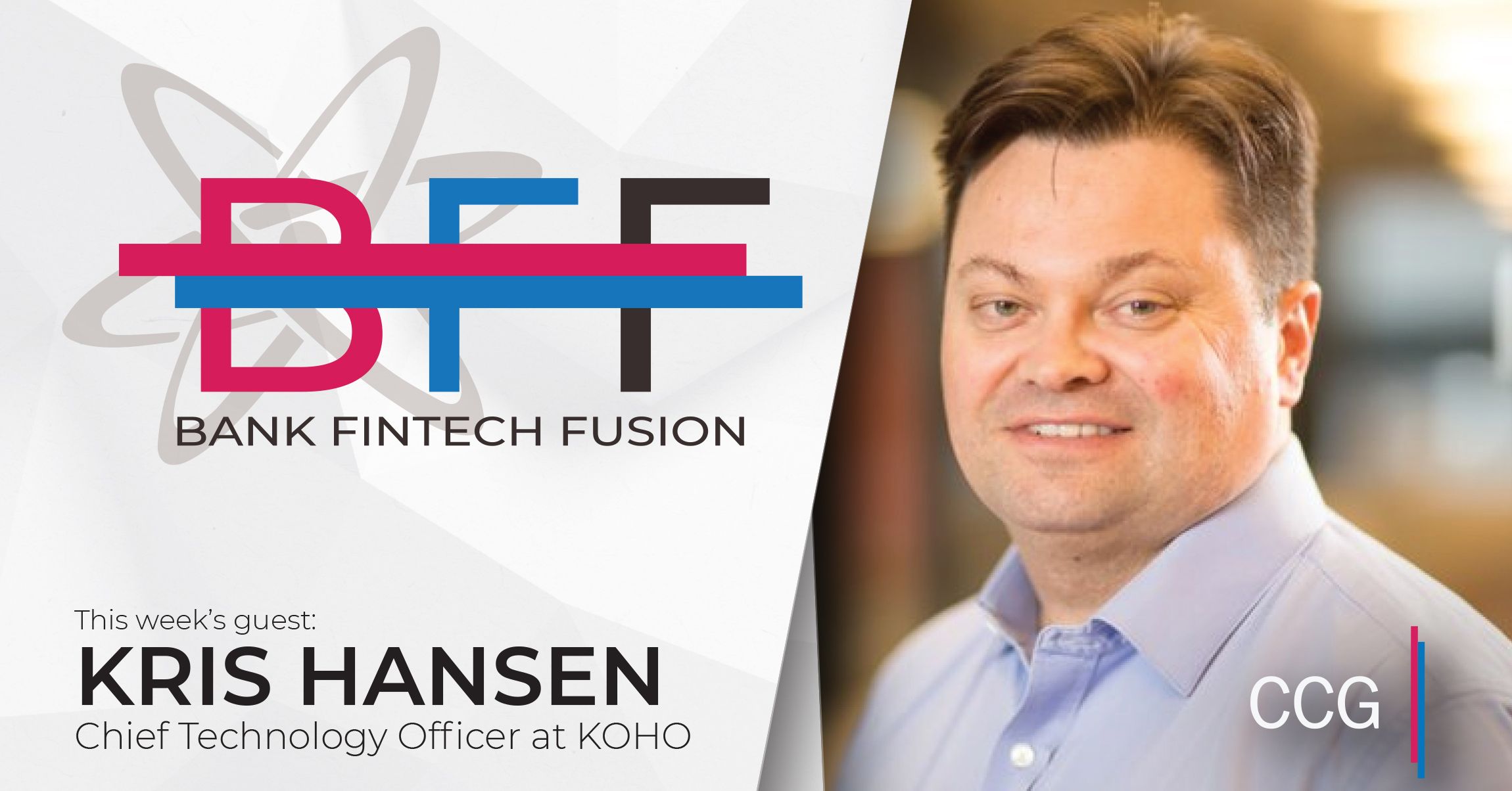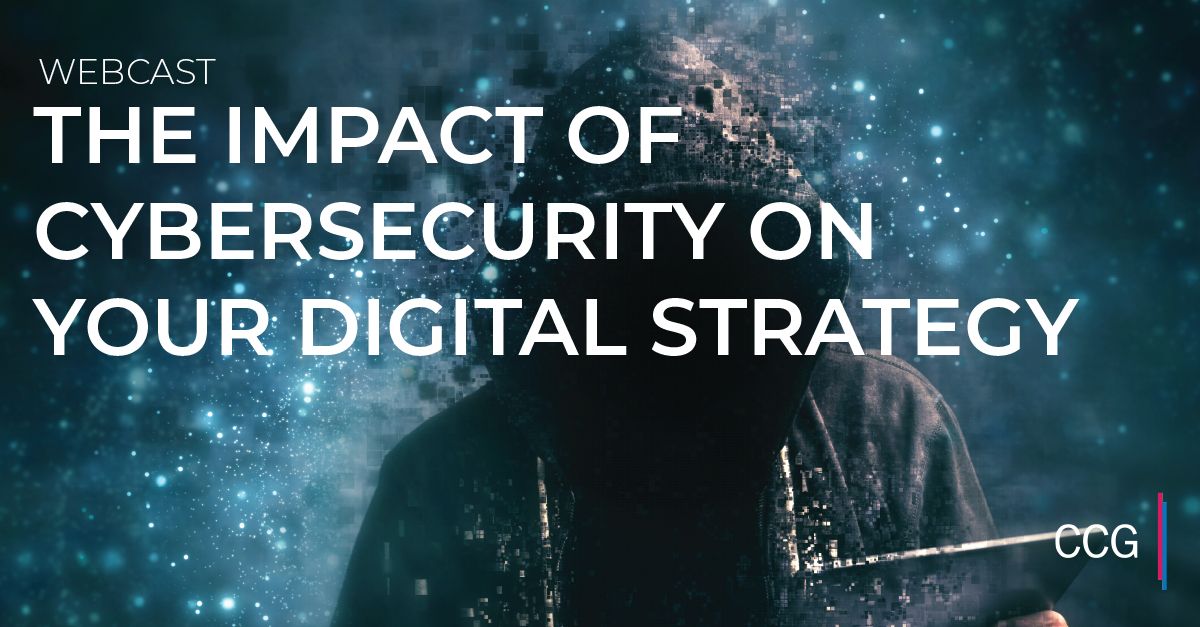Kris Hansen of Koho on How Banks Can Do better
Kris Hansen has a dual role that may be unique in financial services. He is Chief Technical Officer of both the Canadian challenger bank Koho and the early-stage fintech investor group Portag3 Ventures, also Canada-based.
These roles give him an overview of the entire fintech funding landscape. He also knows intimately, perhaps painfully, how banks actually work. Earlier in his career he was Director of Solutions Architecture for RBC, and in this role he mapped out the entire operations of a bank. He could pull out a piece of paper and draw the workings of a bank in minutes.
This insight allows him to do things differently at Koho and not be stuck, as he put it, “in the constructs of the 70s and 80s.”
Listen to the podcast below to hear Hansen discuss the Canadian banking and fintech scene, how banks can build things differently and better, and the outlook for venture funding for today’s up and coming startups.
Read the full transcript here:
Phillp Ryan [00:00:00] Hello and welcome to this episode of Bank and Fintech Fusion. This is Phillip Ryan and I’m joined today by my friend Chris Hanson of Koho and Portag3, and he’s going to tell us a little bit about both these companies and hopefully a lot more. Welcome, Chris.
Kris Hansen [00:00:14] Thank you, Phillip. Yeah. So I’m the CTO at a Koho Financial and Portag3 Ventures. Portag3 Ventures is a venture capital fund focused primarily on fintech and ensure tech and Koho Financial is Canada’s leading Challenger bank focused on shaking things up in terms of digital financial services?
Phillp Ryan [00:00:41] Excellent. So, Chris, how did you wind up in financial services? Was there something that intrigued you about the industry early on getting into it?
Kris Hansen [00:00:50] Yeah, I mean, so it was a couple of things. So I had started my career building an Internet company, and somehow I evolved to be building software for government in the Hawaiian Islands and started to do a bit of financial services, insurance and banking. And I guess the first thing that I noticed was like, what a target rich environment. Financial services is for technology. And having come from a fairly lean sort of Internet environment into, you know, into oil and gas, into government, into financial services. My first impression was, wow, like, you know, first of all, like everything in the business is information. All the debit and credit. It’s all information. It’s all code, it’s all software. And wow, look at all the work that can be done here. So that was kind of how I started. When I moved back to Canada, I took a role with the bank and that bank wanted to change out their core banking system. And I was young and naive at the time. I thought this would be easy. Let’s ripout the core and put in a new one.
Phillp Ryan [00:02:09] Yeah, a couple of weeks. No problem.
Kris Hansen [00:02:12] Sure, why not? Let’s do it. And in fact, like when they were hiring me, they didn’t tell me that they were going to do all of this, but they said that they were going to do some interesting things and that I would enjoy it. We ended up doing a four year project where we replaced about 90 percent of all the technology in the bank. They had about a million customers. And it was like for me it was I had dabbled in financial services in advance of that. I had done some modernization work at a few banks and insurance companies. But this was like a deep dive. And you really learn about this. You really learn about a business and you learn about a system when you blow the old one up and you have to build a new. You really have to think about the essentials behind the process, the essentials behind the business. And so I consider that to be sort of my first real introduction into the industry. And that was kind of around like I started in 06 and sort of, you know, was sort of four years from that.
Phillp Ryan [00:03:21] I remember when I met you around 2012, you had this basically like a map of a bank, which I think is part of the result of what you’re talking about. You had mapped all of these processes and this connected to there, looked like a circuit board or something.
Kris Hansen [00:03:36] Yeah, yeah. It’s like, you know, it’s funny when you meet people in banks and you talk to them and they, you know, if they’re wealth management experts or if they’re lending experts or if they’re core deposits experts, there’s a lot of knowledge just in that one sort of area. And like, very seldom do you get a chance to sort of zoom out and take a look at the entire business and then zoom in and be able to see each process so that in some ways it was a very tough project, is a very painful project. You know, it was something to endure. But it was also like an incredible learning experience. And I probably draw on that even now as I think about how should this work, what are the first principles here in terms of this type of structure and things like that?
Phillp Ryan [00:04:30] Right. So now you mentioned you have a dual role. What’s the greatest challenge facing? Well, I guess either one of those roles or both of those roles, what’s the thing that’s keeping you up at night right now?
Kris Hansen [00:04:45] Yeah, I mean, it’s one of the great things about these roles is that they are very different. You know, my role at Koho being a CTO of a startup firm is very hands on. You know when I joined Koho as the fourth engineer, there’s not really an advisory role there. You need to roll up your sleeves and start writing code. I think Koho has scaled now. The technology team is about 40 people and we’re continuing to build it. We’re continuing to scale. I would say the biggest challenge at Koho is it’s more of a leadership evolution challenge where I need to because we’re scaling so quickly and we’re growing. And were the team is evolving, every few weeks I need to kind of take a look at my role and take a look at what I’m doing and say, well, what do I need to scale? What do I need to change? What do I need to stop doing? What do I need to do more of? And I need to kind of evolve myself. It’s very easy, I think, as a human to get comfortable doing something that you’ve been doing. But I think being in a startup because of the sort of constant change, the challenge is really about scale. Now, in my Portag3 role one of the great things about this role is I get to talk to like two to five CTOs a week because we’re looking at different businesses. We’re looking at investing. And I really enjoy, talking to other CTOs and getting a sense of what’s working, what’s not working.
Phillp Ryan [00:06:31] You can steal all their good idea, right?
Kris Hansen [00:06:34] Well, I think what’s great is that they come with credibility and experience. That’s like as recent as 20 minutes ago. Or we can have a conversation about things that are pretty pragmatic. We can talk about leadership. Sometimes I learn something, sometimes I share something. But I feel like I’m a better technologist for it. And I always try and sort of leave something useful behind. So obviously, the biggest challenge in that role, though, is.
[00:07:03] You know really thinking about what is good look like and so and this is something that I’ve found over time is that the more knowledge and context that I gain, the more it depends is the right answer. And so if you ask me what is like what is good look like? Is this is the technology in this firm good, strong? And so what I’ve had to do is try and simplify that down into a due diligence framework and a model to be able to say that. Yeah, you know what, this technology is appropriate for this business. This is going to work. This is going to scale. This is going to be low risk and high yield. And so trying to kind of codify that, I would say is the challenge. Know, I think similar to Malcolm Gladwell blink where like I think over time you get a sort of, you know, just sort of a visceral kind of a gut feel for. Yeah, that’s it. That’s going to work. That’s right. But then having to sort of codify that, explain that, simplify that structure that I think is always a challenge.
Phillp Ryan [00:08:17] Yeah, I know I can see a real symbiosis between those two roles. That must be pretty interesting to be on both sides of the table that way.
Kris Hansen [00:08:24] Could also use about another 10 hours of a day.
Phillp Ryan [00:08:29] Yeah, that’s a little tougher. So you’ve had a lot of experience over your career working with fintech companies, obviously, and working with banks. So this podcast is all about banks and fintech working together. What would you say is the key? If you can reduce it to one thing or multiple things, what’s the key to bring banks and fintech together?
Kris Hansen [00:08:53] Yeah, and I’ve seen like I’ve seen this work really well and I’ve seen it fall pretty flat. And so I think that, like, one of the key ingredients that I think is essential is the chemistry around the commitment.
[00:09:09] Like if you’ve got a senior person in the FinTech, maybe one of the founders and a senior person in the bank and both are committed and both are, you know, really clear about what the other’s doing and are transparent about their own organizations, are honest about where their own organizations are at. I think that becomes a conduit for the partnership to create success. I think as soon as there’s a lack of transparency, as soon as there’s a breakdown or if people change roles, things are working and then to change roles without that ownership on both sides and without that sort of individual commitment on both sides, I think it struggles. And I’ve been on both sides of that where I’ve been on the bank side and I’ve taken a risk with a partner. But I really believe that that’s the right partner, that this is the right technology. This is the right team. And we can we can do big things together. And I’ve seen that work. And I’ve also been on the other side where I’m trying to be that partner. And I think I’ve got what it takes. And I’m sort of looking for a counterpart on the bank side that’s willing to make the same level of commitment that I’m willing to make. And yes, the organizations are going to be hard to match. And yes, there’s an MPD mismatch. And, you know, there’s all kinds of challenges. But I think with that individual commitment on both sides, we can break through that. We can figure it out. We can resolve it and make it successful. So to me, I think that’s really the top ingredient. And a lot you can you can kind of get past a lot if you have that.
Phillp Ryan [00:11:01] So is that more of a personal thing than a cultural thing? It sounds like a lot depends on the personality of the other person. Or is it more what the parameters of their role is?
Kris Hansen [00:11:12] Yeah, it might. So it might be like I’ve seen it in both ways, so I’ve seen it as the organization culture allows someone to be effectively an owner of this relationship to make this happen. And I’ve also I’ve also seen it be more of an individual, sort of takes a risk, steps out and effectively just makes it happen. I think it’s like I think on the on the fintech side, I think it’s more about the transparency and making the commitment and delivering on the commitment. And I think on the on the banks side, it’s more about having the ownership, having the empowerment, being able to take the risks, being able to break silos where you need to, being able to kind of, you know, move through things where you need to. So I think it’s a bit different on each side of it.
Phillp Ryan [00:12:13] Right. So what does success look like for bank partnerships with FinTech? Obviously, I guess success could mean a different thing for each side of the table.
Kris Hansen [00:12:24] Yeah. I mean, you know, I think that success needs to be something that both organizations can go back to and point to. And it needs to be tangible. I think, you know, we need to begin these relationships with commercials in mind and things like unit economics in mind and results in mind. And then we need to sort of lean into the partnerships to make those results happen. And I know, like, you know, on the startup side, if I go back to my board and I say we have this great partnership, the first thing they’re going to ask is what are the targets? What are the financials? What does this look like on the PNL. And I think we need to think about that in the partnership. I think the stage of, you know, let’s do partnerships for mutual learning. I think that’s behind us. We’ve learned things already. I mean, if you’re still learning now at this stage, it’s getting a bit late. Right. We need these partnerships to be yielding. They need to be producing. And I think both organizations are there wanting different things, quite often within text or wanting distribution from banks, because banks have a strong incumbent base. Sometimes the banks are wanting to be able to offer something into their base that gives them a bit of a moat against maybe a competitive landscape. But whatever those targets are like, I believe in making things quantifiable, making them measurable and then executing accordingly and checking in on those measurements and making sure that they’re holding true. And so I think, you know, basically what success looks like is some sort of bottom line, quantifiable result.
Phillp Ryan [00:14:14] Right. Can you give us a little snapshot view of the Canadian banking market? I think for a lot of people in the US, it’s still largely unknown. I think we know a few of the banks that have crossed the border, but what are the sort of idiosyncrasies that people in the US might not have heard about?
Kris Hansen [00:14:32] Yeah, I think, you know, I think looking, I’ve operated on both sides of the border and I’ve sort of understood sort of financial services from both sides of the border. I think when you look north, not only does it look cold, but it also looks very similar. And you see Canadians speaking a similar language and doing similar things. I mean, we brought you Justin Bieber. So things like that. Also Nickelback, we don’t talk about that. But there’s a real sort of a real similarity to the environment is a real similarity to the sort of business environments and business mindset. But the financial services landscape is significantly different. And I would say that the biggest difference is around how the payments move in Canada and payment structures. A lot of things in the US are centered around and focused on ACH as a format and structure for money movement. And so one of the things that I’ve seen is US companies arrive in Canada and they’re like, OK, this is great. This looks exactly like what I’m used to show me your ACH. And at that point, they realize that, OK, this is going to be a bit different.
Phillp Ryan [00:15:57] They’re not in Kansas anymore.
Kris Hansen [00:15:59] You’re not in Kansas anymore. And so, some of that comes from just the dynamics of banks in Canada are a bit different. We’ve got basically six large banks and then like a long tail of significantly smaller organizations. And those big banks are really formidable in their scale and their size. And, you know, if you’re a fintech and you wanted to partner with those big banks, again, it comes out of those relationships, because you can be talking with one department and they’re not necessarily talking to the other department about what you’re doing. Some of these banks will have like a hundred thousand employees. So if you’re talking to one, you’re not necessarily talking to the other. So I think that that’s a big difference in infrastructure. The sort of banking industry landscape is significantly different. I think in the US you get a lot more community banks and small business and certainly there are some big players, but they don’t necessarily capture the entire consumer market. So there’s a lot of smaller institutions as well.
Phillp Ryan [00:17:10] Yeah, and obviously still a need for challengers like Koho.
Kris Hansen [00:17:15] Well, yeah, like I think, you know, what I love about what we’re doing at Koho is, you know, we’re not necessarily challenging the banks. We’re challenging apathy and we’re challenging the norms and we’re challenging the concepts like why? Like, why do you need a checking account to be separate from a savings account? Why can’t you just have like an account that does the stuff that you need needed to do? Like, I think a lot of the concepts that we face in financial services are constructs from the 70s and 80s. And we’re sort of stuck with. Like I personally don’t use checks and I understand some people really like them, but I personally don’t use them. And so for me, what I’m looking for from a checking account has nothing to do with checking. It has everything to do with, like digital notifications and alerts and awareness and tell me how my spending is doing. Tell me if you see something weird, like, you know, the things that I want from my core account in 2020 is completely different from how I think the industry thinks about these things, which is in my view very sort of 1985ish.
Phillp Ryan [00:18:30] Yeah. There is vestigial, vestigial pieces of that show, the history of how, how we came to be where we are, that people are no longer use.
Kris Hansen [00:18:38] Yeah, absolutely and having like having changed and replaced legacy technology. I can tell you that there’s only one thing harder and that’s legacy thinking. And, you know, when you change a legacy platform, you bump into this legacy thinking and it’s people will come in very rigid. You can’t do that. Well, why not? Because the system doesn’t allow it. Well, the system is now gone. So you can you can almost see the constraints and the constructs that people are living in. And when you do legacy transformation, it’s amazing how you can open up these concepts. You can broaden these concepts out. And having basically built our technology from the ground up and having an amazing team of engineers that can build almost anything in about three weeks, it’s an incredibly liberating feeling to know that we’re not constrained by concepts. We’re not constrained by legacy thinking. We’re not constrained by legacy technology. We can just go.
Phillp Ryan [00:19:44] Yeah, tell me a bit about Koho’s customer base, what does a Koho customer look like and what do they want from their bank?
Kris Hansen [00:19:52] Yeah, it’s when we started this journey, we thought this would be really simple. We thought this would be like, well, you know, we’re going to do some digital stuff and it’s going to be people to like digital. It’s probably going to be millennials. Like, that was sort of our thinking when we started. What we found is that the people that are digital natives are kind of a broad cross-section of just Canada. And so when we start to look at our segments, we’re not so much looking at demographics, we’re looking at behavior. And we’re finding that some people love to use us as their primary account. They get their payroll with us to pay their bills. They pay their friends. They do all the normal stuff that people would do with a bank account. But then there are like this these clusters of use cases. Some people only use us for big purchases. They buy their TVs with us. They shop on Amazon with us. And when we think about, well, why is that? Might be the cashback. It might be some of the purchase protection price protection that we offer. You know, I’m not certain on all of the rationale, but you start to see these clusters of mergers like there’s an incredible cluster that really surprised me of retirees. And retirees like their behavior is they load up a bunch of money onto their Koho account. And they head to a warmer climate and they spend the winter there, which I think is, first of all, really smart, but they’ve realized that, like our FX fees are low and that it’s a great way for them to kind of take their funds with them without having to worry about cross-border banking and stuff like that. So it’s actually one of the more interesting journeys of this business has been like understanding all of the different use cases. And we’ll put out like a capability on our platform and we put it out there for the world, but they interpret it into their own use cases. Like we have a savings construct called goals, and some people are using goals to save for things like a dishwasher or a Tesla. So there are people that are saving right now for a Tesla. Other people use goals more like transactionally as a monthly way of putting aside funds for their rent. So they’re thinking like their goal this month is to pay their rent. Other people, their goal is to get a Tesla. Other people have goals for vacations. But I think it’s interesting for us, you know, as a platform provider, we need to think about these concepts. We need to think about these features from a position of versatility, like this is what we’re thinking. But how is the world going to interpret how are Canadians going to take this and what are they going to do with it? And I think that’s fascinating. Like, it’s been a really interesting journey to just kind of look at what people are doing, for example, with our joint accounts, like we originally envisioned it for people that are coupled up. And we thought, well, you know, this is a great way to nudge your partner to like pay half the Internet. And isn’t that an annoying thing to have to do? And what if we made that easier and then we start to see all these great use cases and people that are planning together for some major life and people that are planning for various things that they want to have a joint account. And so, you know, to come up with these constructs and come up with these concepts, you sort of release them in the world and then they sort of the world does with it know what they will.
Phillp Ryan [00:23:39] What is your work at Portag3 tell you about the state of the industry today? We mentioned earlier you’re on both sides of this thing. So what is that? What does that look like from a Portag3 point of view?
Kris Hansen [00:23:51] Yeah, I mean, like, you know, in the last few years, I would say that the market has been really active. I think there’s a lot of there are a lot of different business models that are evolving now that didn’t exist two years ago. I think the fintech was sort of an emerging space a few years ago, seemed a bit risky. And I think it’s become much more front and center from an investment thesis perspective. I think there was a question years ago like, well, will kind of meaningful models emerge. And I think now it’s more of a given. There are questions as to the timing and there are questions as to the, you know, the impacts and the scope and scale. But I mean, I think in general, you know, we’re seeing you know, we’re seeing a lot of traction. I would say both B2C and B2B models have been evolving.
Phillp Ryan [00:24:55] And we’re getting a little bit short on time. But which currently developing technology or perhaps slightly future technology, do you see having the greatest potential for helping out the financial services industry and its customers?
Kris Hansen [00:25:12] I think that there is something there’s something very compelling about distributed financial services technology and so without saying the word blockchain. But I did go and say it.
Phillp Ryan [00:25:29] It’s not a dirty word. You can say that. You can say that on the radio.
Kris Hansen [00:25:35] But so like from a technology perspective, when you think about what’s happening with peer to peer financial services technology, whether it’s a completely decentralized or semi decentralized or some other model, what I find fascinating, what I find impressive, what I find amazing is that you have all of these people so excited about core banking, like when I was a core banking technologist you know who wanted to talk about core banking like nobody. There was no interest in the space. Nobody was thinking about money movement. Nobody was about crossborder. Nobody was talking about KYC. Nobody was up against these problems and thinking about how to apply technology to solve these problems. Now, I think there are many people I think we have we’ve seen some false starts and various challenges in this face, but I think there’s still I have a lot of enthusiasm for distributed, decentralized financial services technology. I have a lot of enthusiasm for technology being a disruptor and basically creating new kinds of networks and new kinds of message and new press relationships. So, again, I think it’s still pretty early days, but there’s a lot of interesting stuff that could emerge there.
Phillp Ryan [00:26:57] I love hearing positive stuff about blockchain these days. The overall tenor is so, so downbeat. But it’s good. Good to hear. Good to hear about the bright side. Chris, thank you so much for joining us today.
Kris Hansen [00:27:10] My pleasure. Phillip, thank you for having me.
Phillp Ryan [00:27:12] Always good to talk to you and thank you everyone for listening. If you enjoy this podcast, please subscribe on Apple podcast or listen to your favorite podcasts and check out the links below. We’ll put links to all the stuff Chris is working on, Portag3 Koho and thanks again.
Subscribe to CCG Insights.







